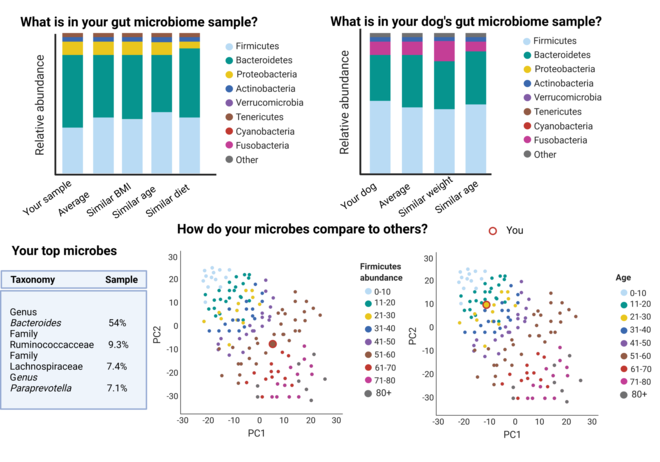We use DNA preservation tubes for our sample collection, which make the sample collection easier for our study participants, and enable short term storage at room temperature (which makes the samples easier to transport).
An instructional video of sample collection can be watched (opens in a new window)here.
More information on the collection tubes is available (opens in a new window)here.
This is the outline of our project:

Description of the study methods
Who are we recruiting?
- Our study target group is 45-50 pairs of dogs and owners. We are mostly interested in Labrador retriever dogs, but other breeds and mixes are also welcome!
- You need to have owned your dog for at least 1 year
- You need to be the main person walking and feeding your dog
- You and your dogs should not have taken any antibiotics in the past 3 months
How do you participate in the study?
- You can send an email to dogownermicrobiome@ucd.ie to express your interest, or if you have any questions
- You will need to read brief study description, sign a consent form and be aware of your GDPR rights (we will give you a privacy notice and let you know how we would like to use your data). Please note that you can withdraw your consent at any time and be removed from the study.
- We will send you a survey
- You will also receive a sample collection pack (in the post or in person if you prefer), to take a sample from you and your dog.
- The samples can be returned to us by post (return address will be given with sample collection pack), or dropped over at reception in UCD Veterinary Hospital (Belfield, Dublin 4) with a note for "Dagmara Niedziela, Veterinary Microbiology". Samples can be kept at room temperature and will ideally be with us within 1-2 days – that is when the sample is the closest to the original microbiome.
- We will analyse all the samples together – which means that you will receive your results a few months after the second sample is collected. This is a diagram of what sample results might look like:

We will also provide some notes with the report, to suggest what the results might mean, based on current research, and provide links to sources of our conclusions.